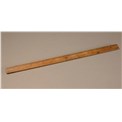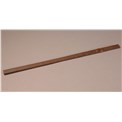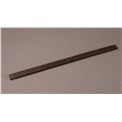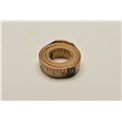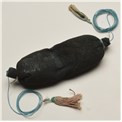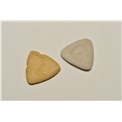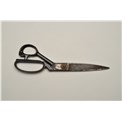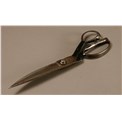-
History & Society
- Education in Pre-war Hong Kong
- History of Taikoo Sugar Refinery
- Hong Kong Products Exhibition
- Local Festivals Around the Year
- Post-war Industries
- Pre-war Industry
- The Hong Kong Jockey Club Archives
- Tin Hau Festival
- Memories We Share: Hong Kong in the 1960s and 1970s
- History in Miniature: The 150th Anniversary of Stamp Issuance in Hong Kong
- A Partnership with the People: KAAA and Post-war Agricultural Hong Kong
- The Oral Legacies (I) - Intangible Cultural Heritage of Hong Kong
- Hong Kong Currency
- Hong Kong, Benevolent City: Tung Wah and the Growth of Chinese Communities
- The Oral Legacies Series II: the Representative List of the Intangible Cultural Heritage of Hong Kong
- Braving the Storm: Hong Kong under Japanese Occupation
- A Century of Fashion: Hong Kong Cheongsam Story
Geography & EnvironmentArt & Culture- Calendar Posters of Kwan Wai-nung
- Festival of Hong Kong
- Ho Sau: Poetic Photography of Daily Life
- Hong Kong Cemetery
- Sketches by Kong Kai-ming
- The Culture of Bamboo Scaffolding
- The Legend of Silk and Wood: A Hong Kong Qin Story
- Journeys of Leung Ping Kwan
- From Soya Bean Milk To Pu'er Tea
- Applauding Hong Kong Pop Legend: Roman Tam
- 他 FASHION 傳奇 EDDIE LAU 她 IMAGE 百變 劉培基
- A Eulogy of Hong Kong Landscape in Painting: The Art of Huang Bore
- Imprint of the Heart: Artistic Journey of Huang Xinbo
- Porcelain and Painting
- A Voice for the Ages, a Master of his Art – A Tribute to Lam Kar Sing
- Memories of Renowned Lyricist: Richard Lam Chun Keung's Manuscripts
- Seal Carving in Lingnan
- Literary Giant - Jin Yong and Louis Cha
Communication & Media- Hong Kong Historical Postcards
- Shaw Brothers’ Movies
- Transcending Space and Time – Early Cinematic Experience of Hong Kong
- Remembrance of the Avant-Garde: Archival Camera Collection
- Down Memory Lane: Movie Theatres of the Olden Days
- 90 Years of Public Service Broadcasting in Hong Kong
- Multifarious Arrays of Weaponry in Hong Kong Cinema
-
History & SocietyGeography & EnvironmentArt & Culture
-
View Oral History RecordsFeatured StoriesAbout Hong Kong Voices
-
Hong Kong Memory
- Collection
- All Items
- Steps (1)
Recently VisitedSteps (1)
Bamboo tailor's ruler with Cantonese scale
1910s to 1950s
Hong Kong Museum of History collection
The making of cheongsam starts with taking the customer's measurements. Due to the deep-rooted belief that men and women should keep a respectable distance, cheongsam tailors continued to use hard rulers for measurement until after the Second World War. Given the distance between the ruler and the customer's body, the tailor's visual judgment and experience were crucial for producing cheongsam that met customer expectations.
Shanghai tailors who came to Hong Kong initially used Shanghai rulers, but later switched to Cantonese rulers. One Shanghai foot equals 13.59 inches, whereas one Cantonese foot is equivalent to 14.67 inches. The rulers were made of bamboo, wood, iron or copper. Bamboo tailor's ruler with Cantonese scale
1910s to 1950s
Hong Kong Museum of History collection
The making of cheongsam starts with taking the customer's measurements. Due to the deep-rooted belief that men and women should keep a respectable distance, cheongsam tailors continued to use hard rulers for measurement until after the Second World War. Given the distance between the ruler and the customer's body, the tailor's visual judgment and experience were crucial for producing cheongsam that met customer expectations.
Shanghai tailors who came to Hong Kong initially used Shanghai rulers, but later switched to Cantonese rulers. One Shanghai foot equals 13.59 inches, whereas one Cantonese foot is equivalent to 14.67 inches. The rulers were made of bamboo, wood, iron or copper. Bamboo tailor's ruler with Cantonese scale
1910s to 1950s
Hong Kong Museum of History collection
The making of cheongsam starts with taking the customer's measurements. Due to the deep-rooted belief that men and women should keep a respectable distance, cheongsam tailors continued to use hard rulers for measurement until after the Second World War. Given the distance between the ruler and the customer's body, the tailor's visual judgment and experience were crucial for producing cheongsam that met customer expectations.
Shanghai tailors who came to Hong Kong initially used Shanghai rulers, but later switched to Cantonese rulers. One Shanghai foot equals 13.59 inches, whereas one Cantonese foot is equivalent to 14.67 inches. The rulers were made of bamboo, wood, iron or copper. Measuring tape with Cantonese scale
1960s to 1970s
Hong Kong Museum of History collection
In the 1950s, cheongsam tailors began to use measuring tapes for more accurate measurements crucial for making body-hugging cheongsam. The two sides of the measuring tapes show different scales: the British inch is represented in red and the Cantonese cun in black. Chalk powder bags
1960s to 1970s
Hong Kong Museum of History collection
The chalk powder bag is a small leather or fabric pouch holding coloured chalk powder with both ends fastened by a thread. A cord consisting of several strands of cotton thread runs through the centre. As the cord is pulled out of the bag, the coloured chalk powder adhering to it casts lines on the fabric, which is then cut along the chalk marks. Tailors usually have several of these bags each containing a different colour powder to be used on fabrics of different colours.Triangular chalk cakes
1960s to 1970s
Hong Kong Museum of History collection
The chalk cake is a key tool whether the tailor is casting patterns directly onto a fabric or cutting out fabrics according to a paper pattern. Chalk cakes come in different colours and are often pulverised to produce the powder for the chalk powder bags. Tailor's scissors
Mid-20th century
Hong Kong Museum of History collection
To this day the blades of these scissors are still keen and can open smoothly. Tailor's scissors
Mid-20th century
Hong Kong Museum of History collection
To this day the blades of these scissors are still keen and can open smoothly.Copyright © 2012 Hong Kong Memory. All rights reserved.
| Set Name |






